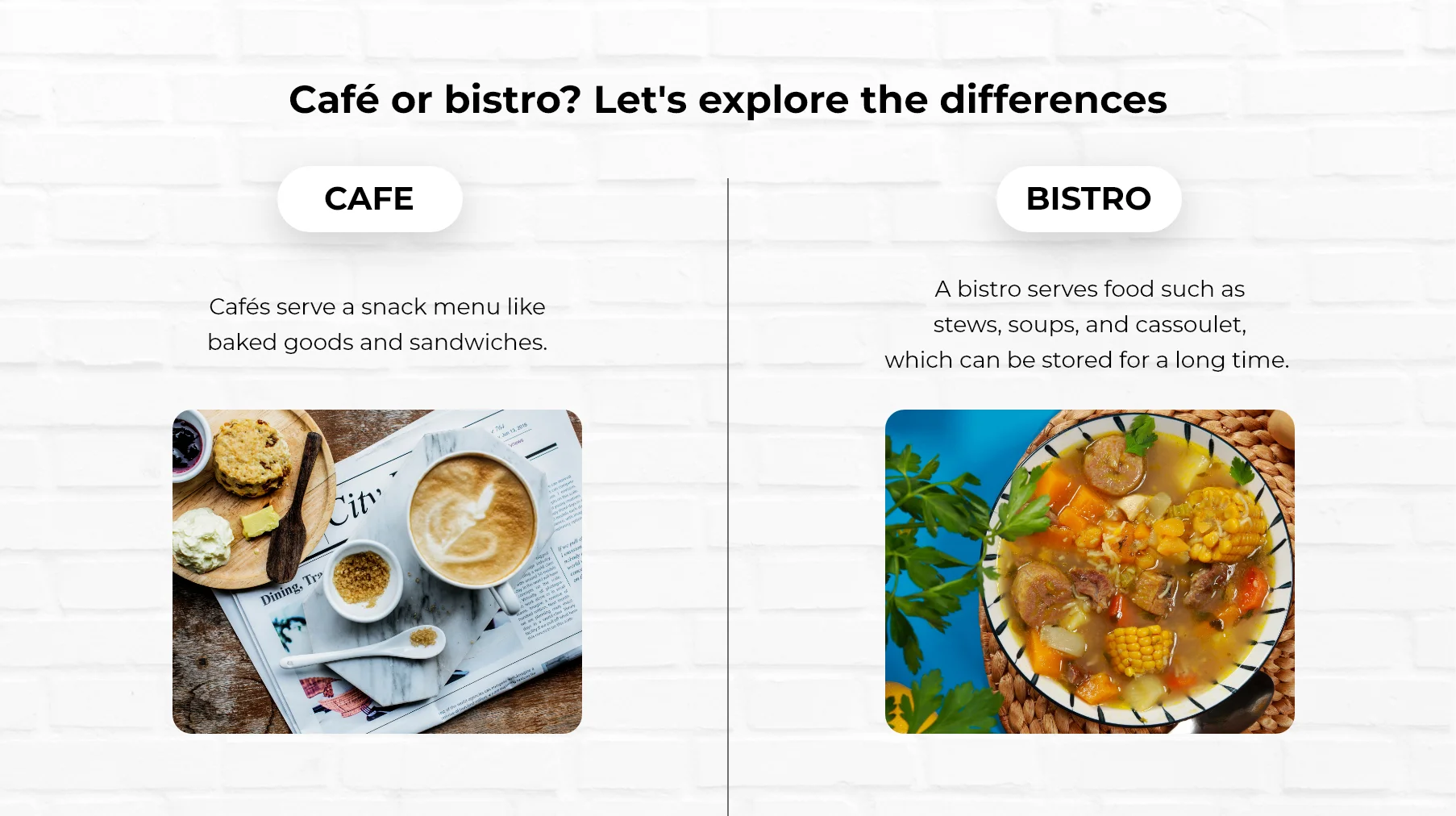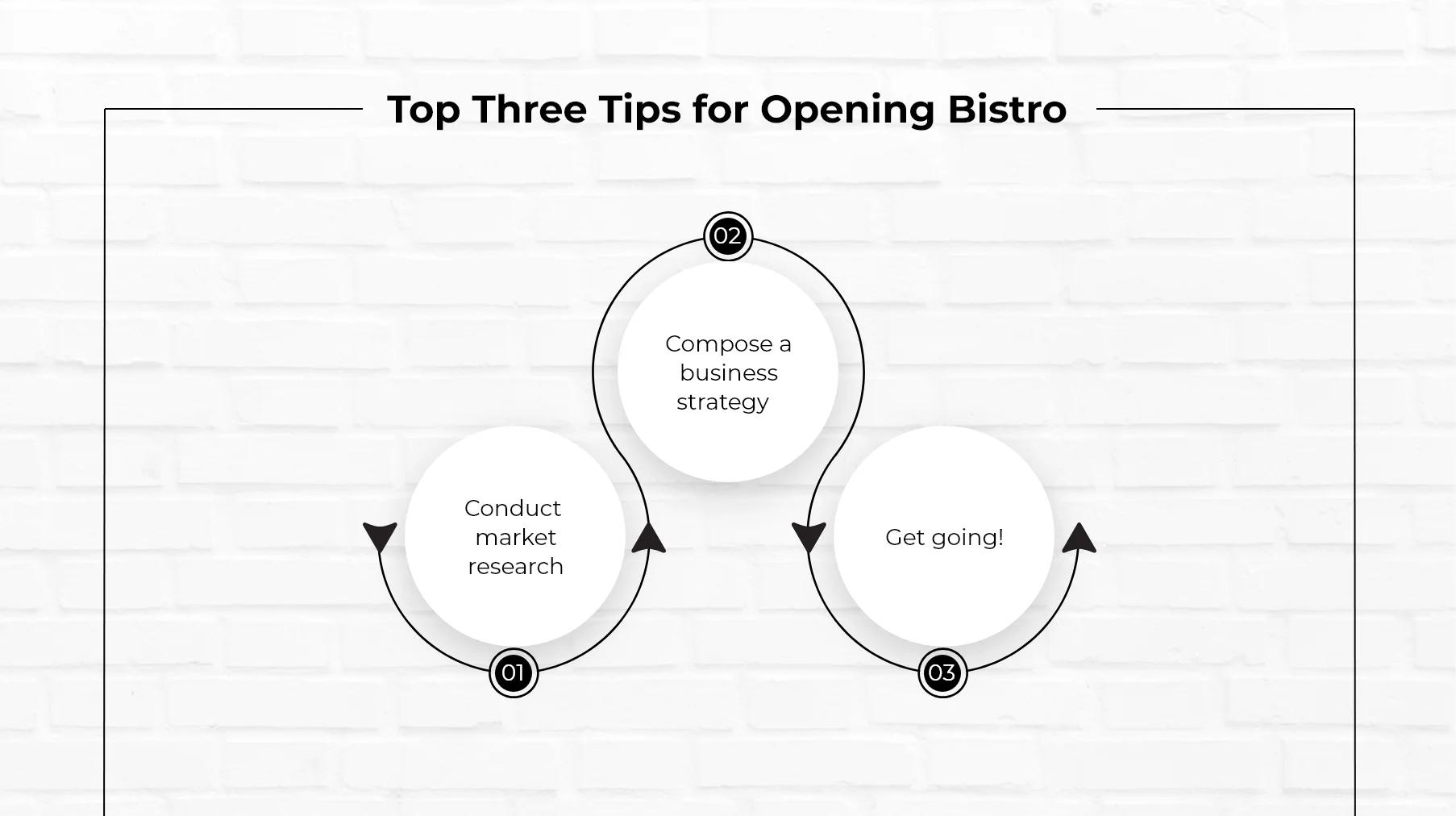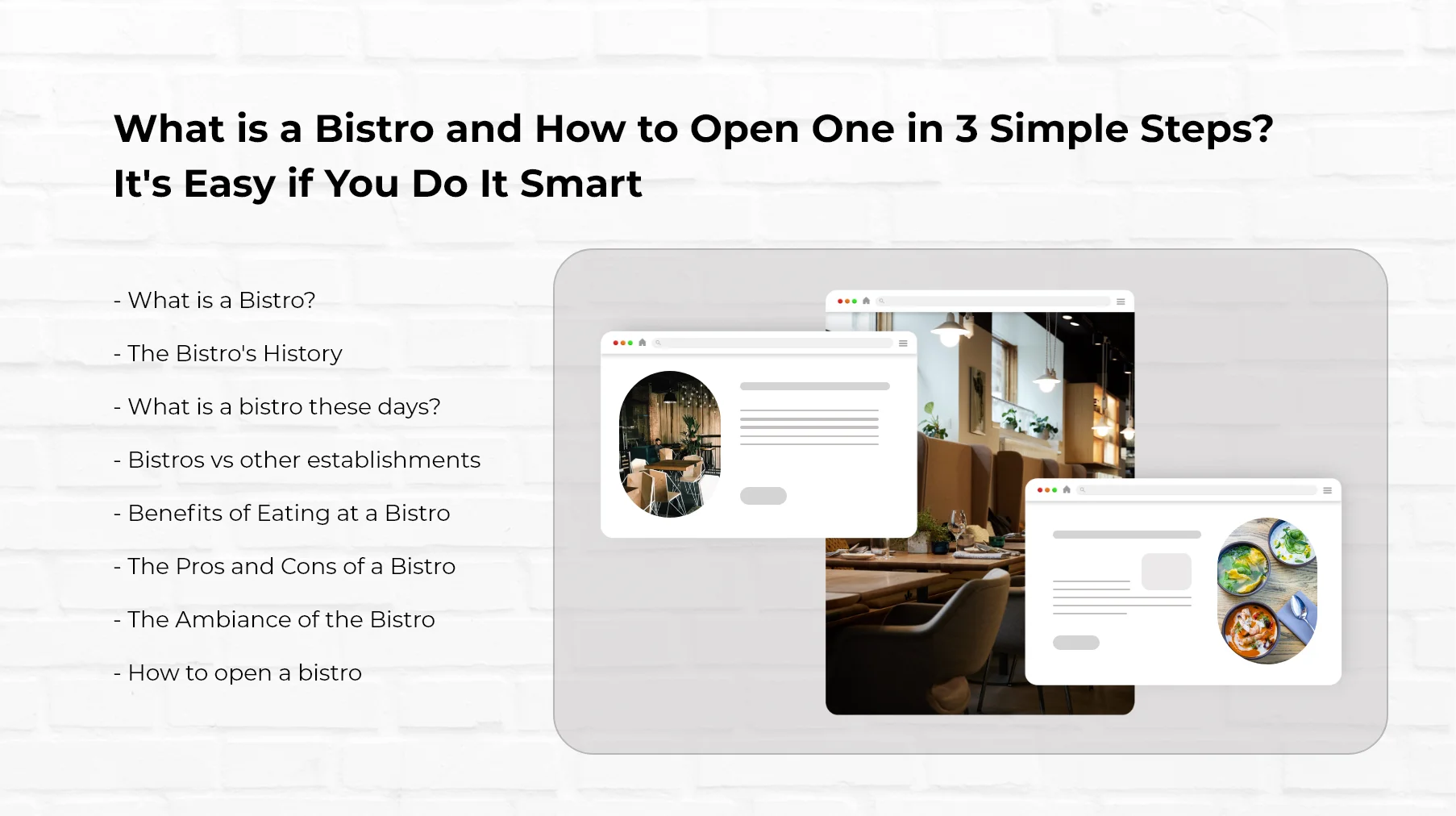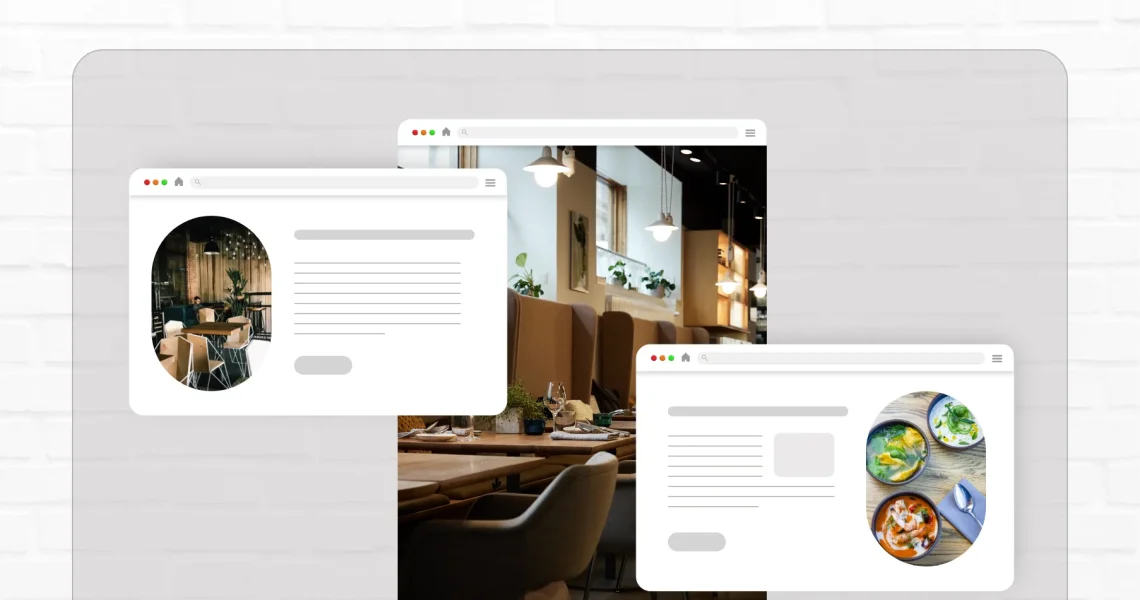What is Bistro and How to Open One in 3 Simple Steps? It’s Easy if You Do It Smart
Bistros are restaurants, but they are smaller and more casual than fine dining establishments. They are known for their warm atmospheres, close connections to their communities, and classic, usually French-influenced food. However, what exactly is a bistro? What makes them different from other restaurants? Check out these tips for opening a neighborhood Bistrot.
A bistro today is defined by numerous factors, including the pricing, the food provided, and the dining formality. It is a tiny, casual restaurant with a reasonably inexpensive, simple menu with a choice of alcoholic beverages. These restaurants cater primarily to people looking for a low-cost, simple meal. It's worth noting that not every bistro restaurant serves French cuisine.
The Bistro's History
The bistro began as a form of restaurant that operated out of the basement of an inn or apartment building, where residents paid for both room and board. Landlords could improve their income by offering their kitchens to the paying public. Meals were often simple and made with ingredients that could be easily kept.
What is a Bistro these days?
The food offered, the price, and the formality of the eating experience are all characteristics of a modern bistro.
A bistro can serve any type of food; however, bistros usually serve traditional French cuisine or locally influenced meals. The food served is usually modest – bistros do not serve large portions of food. This is mainly due to a lack of space. Bistros are typically seen in modest restaurants. As a result, space is limited, and serving huge meals to large parties would necessitate a lot of table space. Most bistros only accommodate parties of 4-6 as a result.
Bistros also serve food that is reasonably priced, with dishes often falling into the low to mid-range price. Bistros are intended to be accessible, and pricey meals may turn off potential diners.
Finally, bistros are designed to be casual. A modern bistro's decor and ambiance are intended to be simple, welcoming, and laid-back. A bistro should never make a customer feel out of place, underdressed, or unprepared for the next eating experience.
Bistros vs other establishments
When asked what a bistro is, it's easy to mix it up with other sorts of restaurants. Words like “bistro," “restaurant," and “café" are frequently used interchangeably. However, the meanings of these words might vary greatly.
Restaurant vs. a bistro
A “restaurant" is an umbrella term for any establishment that offers food, and it has many different subtypes, including:
- Cafe
- Bistro
- Brasserie
- A steakhouse
- Tapas bar
- Fast-food restaurant
A bistro is a subtype of restaurant that refers to a very specialized style of restaurant. A bistro serves good meals at reasonable costs in a fairly small dining room, usually with the choice of alcohol.
Cafe vs bistro
Bistros and cafes are more similar than dissimilar. They also serve food and drinks to a somewhat small dining room and usually offer modestly priced, plain meals in an embellished setting. The consumer experience is similar in this way.
However, there are important distinctions. Bistros, for example, usually serve full meals at tables, whereas cafes may merely serve snacks, cakes, or desserts. In fact, a café does not have to offer food to be deemed one. Cafes are less expensive than bistros and sell food and drinks that can be consumed quickly or even taken out.
Customers use and perceive cafés and bistros differently. A consumer may spend an extended period of time in a cafe reading, socializing, eating, or simply relaxing. Bistros, on the other hand, are designed with the idea of customers coming in for a meal and then departing.

Brasserie vs. a bistro
The amount of formality in the dining experience is the primary distinction between a bistro and a brasserie. A brasserie is a slightly more formal variant of a bistro. While both bistros and brasseries are considered casual, a brasserie may feature the trappings of a more formal restaurant, such as table linens, printed menus, and professional table service, which a bistro may not have.
Bistro vs gastropub
A gastropub is a hybrid bar, restaurant, and pub that serves both alcohol and food.
A bistro primarily provides meals, but a gastropub serves meals as well as a wide range of beverages. A gastropub's food may also be refined and expensive. Gastropubs are higher-end, refined versions of regular pubs.
Pub vs. a bistro
“Public house" is shortened as “pub." A pub is a gathering place for individuals in the community to drink or eat. Pub food is often inspired by home-cooked meals. The ambiance in the bar is quite informal, with comfortable, lounge-like furniture and activities such as billiards and darts.
A bistro focuses on a meal-centric experience, whereas a pub provides meals, drinks, and a place for customers to loiter if they like.
Bistro vs bar
Both bistros and bars serve alcoholic beverages. However, unlike bistros that serve full meals, bars either do not serve food or have a very limited menu of snacks and finger foods.
Bistros are places for sit-down meals, whereas bars are usually places for drinking and socializing
Benefits of Eating at a Bistro
- They offer a laid-back vibe that makes them ideal for late-night dates and meals.
- They are typically cheaper than other sorts of restaurants.
- You don't have to go to a bar because they also serve alcoholic beverages.
- They don't just serve French food; they also serve various fast foods and beverages.
The Pros and Cons of a Bistro
Bistro restaurants are a popular style of restaurant. They are often tiny, intimate restaurants that serve French or Italian food. They are typically less expensive than other types of restaurants and have a more casual environment.
Opening a bistro restaurant has various advantages. To begin with, bistros are often small businesses with low startup costs. Second, because bistros rarely require a large workforce, they have modest operational costs. Third, because bistros have a loyal audience, they are less likely to encounter sales volatility.
However, there are several drawbacks to starting a bistro restaurant. First, because they are tiny enterprises, bistros are frequently less profitable than larger eateries. Second, because bistros are difficult to sell and promote, they may struggle to attract new consumers. Third, bistros may struggle to broaden their menus beyond French or Italian cuisine, limiting their appeal.
Despite some cons, the pros of starting a bistro restaurant may outweigh the cons for some entrepreneurs. Bistros offer a distinctive dining experience that can appeal to customers looking for a different option from the usual restaurant.
The Ambiance of the Bistro
Interior Decoration: The Cozy Charm
Bistros typically have a warm, intimate interior style. The décor, far from being refined and elegant, has a rustic charm, with distressed furniture, old vintage wall accents, and charming art pieces. It’s a location where guests are invited to linger over beverages or a meal, surrounded by the comforting embrace of an environment reminiscent of a welcoming home.
Ambiance: Casual, Cozy, Convivial, Relaxed
A bistro's ambiance is intended to promote relaxed and comfortable social interactions. A bistro, with its cozy corners, soft lighting, and sociable surroundings, provides a break from the hurry and bustle of daily life. Some bistros can offer games like billiards and darts, encouraging customers to unwind and engage with others in their neighborhood.
The easygoing mood of a bistro extends to its serving manner as well. Patrons are not rushed but rather encouraged to take their time and enjoy their meals at tables that, while close together, nevertheless provide a sense of personal space. The emphasis is not on turning tables rapidly, but on ensuring that each patron has a pleasant experience in the cafe.
How to open a bistro
You've probably thought a great deal about your restaurant concept if you've been dreaming of opening your own restaurant or bistro. It's fun to let your imagination run wild when choosing the concept of your restaurant. A concept should include the type of restaurant you want to open, a top-notch website for your restaurant or bistro, and a marketing plan.
Here are the top three tips for opening a bistro:

Step 1: Conduct market research
Bistros thrive as local restaurants. The first step in opening a bistro in your area is to research the best location and figure out what market gap your business may cover. Check out what restaurants are now open, what residents are seeking for, and what services are available to assist you.
Step 2: Compose a business strategy
A detailed business plan is one of the most important steps in every successful company. A business plan defines the “why" and “how" of your restaurant, as well as describes your entire roadmap and vision. This is where you'll decide on an idea, develop your service, staffing, and operational models, arrange your budget, create your bistro restaurant menu, and much more. This is also a terrific approach to persuade potential investors to invest in your company.
Step 3: Get going!
From there, starting a bistro is pretty similar to starting any other type of restaurant. Check out this resource for further information and a step-by-step checklist on how to operate a restaurant.

Conclusion
The bistro is a distinctive player in the diverse landscape of dining places. With humble beginnings and an attitude rooted in community, simplicity, and comfort, the bistro has carved out a global niche for itself. This type of restaurant is more than just a place to eat. It’s a place of warmth, nostalgia, and convenience, embodying the age-old adage that food is more than just nourishment. A bistro is a great spot to go if you want a hearty meal, a cozy nook, or a link to a touch of Parisian elegance.
